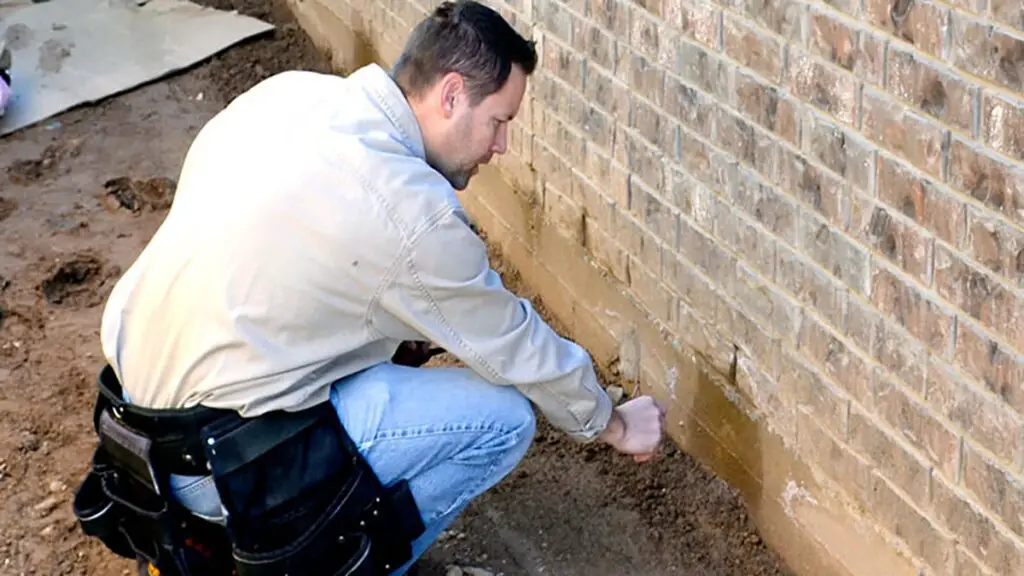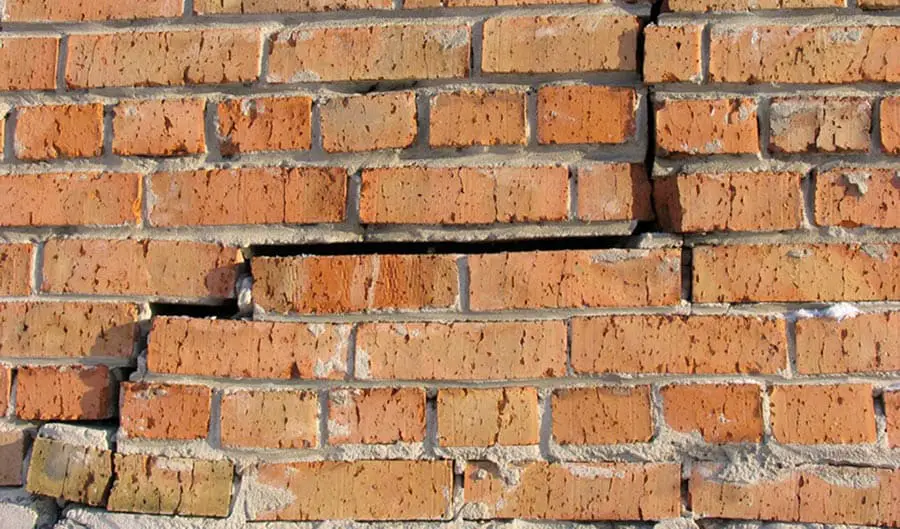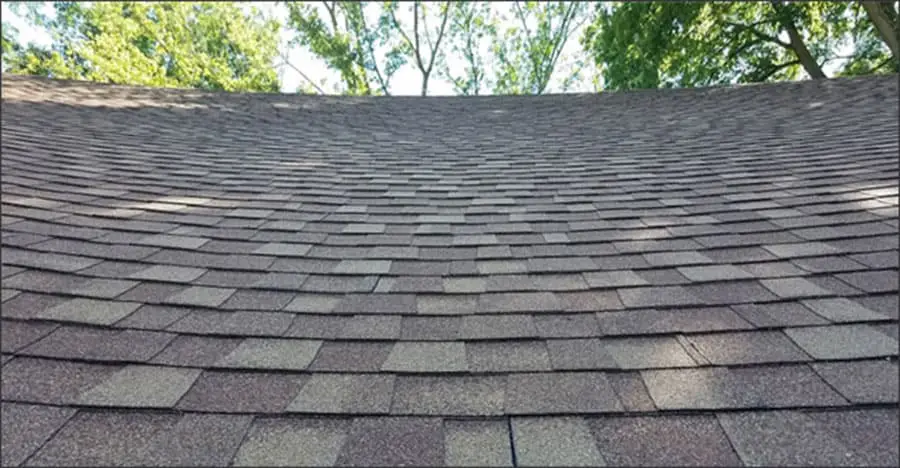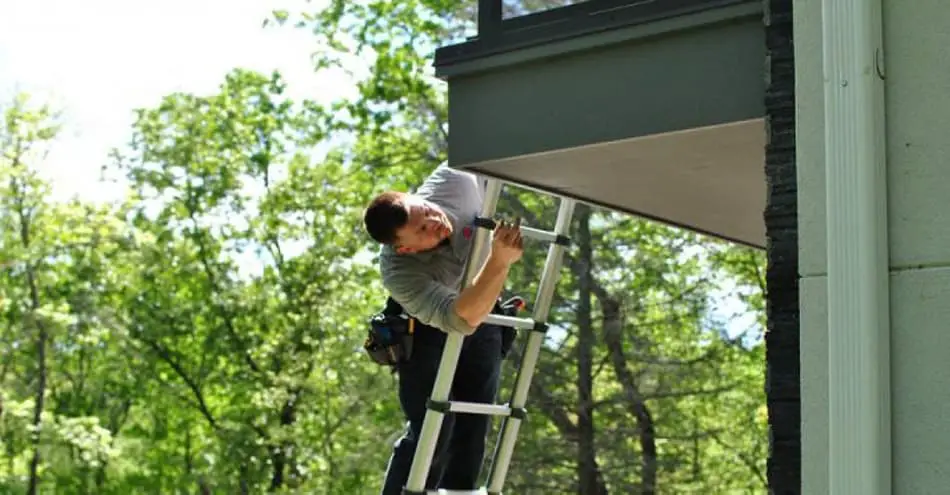When it comes to home inspection structural issues, the structural integrity of a property is undoubtedly one of the most vital factors for determining its safety and overall value. The rest of the home’s features become obsolete if the structure is weak or unstable. With that being said, what structural issues do home inspectors report when conducting a home inspection?
Home inspectors visually inspect the home’s structure, looking for structural issues. Home inspectors document structural problems and recommend an examination by a licensed contractor or structural engineer.

Before we begin, It’s essential to understand the difference between a home inspection and a structural inspection. Home inspectors must compile a detailed report of the home while conducting a complete and thorough check according to the guidelines set out by their state licensing board, ASHI, and NACHI Standards of Practice.
Home inspectors that follow the ASHI or NACHI guidelines “cannot report on the adequacy of any structural system or component.” They can only observe and inspect the structural elements without providing a detailed analysis.
However, if they believe that there are significant structural defects, they will suggest that you hire a licensed contractor or a structural engineer to conduct a thorough assessment. Nevertheless, the devil is in the details. The structure will reveal clues to what is happening, which is what the home inspector does.
It’s important to note that while some home inspectors are also licensed contractors or structural engineers, most are not. A subjective home inspection observes the building’s structure based on the inspector’s knowledge and experience.
A full structural inspection requires load-bearing calculations, which a structural engineer can only perform.
This article will highlight some common structural home inspection issues you might find on a home inspector report. Let’s jump into it.
Negative Drainage Issues
Home inspectors will survey the land to determine the topography when they arrive at the property. This gives inspectors a clue as to what they might find when they look inside the property itself and whether or not the home could be susceptible to water damage at a foundational level.
The home inspector will note whether the property is on a negative or positive gradient slope. If your home has negative gradient slopes running towards the foundation, this will direct stormwater, or any other type of water, towards the foundation.
If the negative grading is considerable, the subsequent water penetration could damage the foundation of your home over time, causing it to become unsafe. Over 95% of water penetration problems arise due to surface water not being appropriately managed, resulting from a negative gradient.
Furthermore, if your home is located on a steep gradient, this suggests it could be subject to structural issues caused by erosion of the land and its movements.
Ideally, you want stormwater runoff to flow away from the house. When this is not an option, you may need a french drainage system to collect stormwater runoff and direct it away from the foundation.
Trees Close to the Foundation

When the inspector checks the property’s exterior, they will take some time to inspect the surrounding vegetation. If the inspector observes overhanging branches or trees planted too close to the house will be noted as a defect in the inspection report.
According to the NACHI, all trees should be at least 10 feet away from the house so that they are not in contact with the property and their roots will not cause any structural damage or moisture issues. Plants growing next to the home could also raise the soil level too high against the foundation, which could cause problems.
If a tree is too close to the foundation, removing the tree will be recommended. However, depending on the size of the tree, removal needs to be handled with care.
Large trees near a home’s foundation should be cut close to the ground, and the stumps should be ground instead of uprooted. Uprooting a mature tree close to a foundation can cause more harm than good.
Visible Cracks

One of the most obvious things home inspectors look for when conducting a property survey is any evidence of cracks, particularly those in the foundations.
Some cracks around your property could indicate severe structural failure, while others may be purely cosmetic and present no cause for concern. The home inspector’s job is to determine the severity of these cracks and whether they indicate severe structural issues within the home.
Here are some of the most common types of cracks you will find around your home and what they indicate:
Horizontal cracks – Horizontal cracks may or may not indicate a structural problem. When horizontal cracks can occur from concrete shrinkage as it cures. This is commonly found in concrete slabs. However, when horizontal cracks are present and shifting or separation occurs, that’s a sign that the foundation is settling, causing stress on the home.
Diagonal cracks – Diagonal cracks widening also indicate possible settlement, especially ones wider at the bottom than the top.
Brick/Mortar joint cracks – Zig Zag cracks that follow the mortar line in your property’s brick walls could indicate severe structural defects in your home. If a crack spreads that you can see through it or the bricks move, this will go down on the home report as a condition that needs further examination.
Window/door cracks – Windows and doors are typically the weakest part of the structure, and in the first place, a problem will manifest itself. This makes them one of the first places to show signs of structural issues in the home. Home inspectors will keep a close eye on windows and doors around the property for this reason.
It’s important to note that a home inspector (nor anyone else) can fully determine the rate of movement from one site visit. This typically takes multiple trips over some time.
Structural Framing Defects

After the home is framed, plumbers often cut framing during plumbing installation.
Routinely, we find notched floor joists or completely cut out to make room for the piping. HVAC contractors are bad about cutting things like engineered trusses to install heating systems and ductwork.
These alterations create defects that need to be corrected by the building contractor but often is not. This happens during both new construction homes and especially during existing home renovations. This also holds for contractors repairing wood damage.
Sistering Damaged Floor Joists
When a floor joist is damaged by moisture or termites, the contractor will “sister” the joist, which involves running a new floor joist alongside a defective one.
This practice is acceptable, provided the new floor joist runs the recommended 3 feet past the problem area on each side to allow the new joist to be nailed. If possible, running the new joist the entire length is best practice. It would be best if you correctly supported the repaired area to carry the additional weight of the new joist.
Notching removes a portion of a wood member to allow plumbing or electrical installation. Good planning minimizes the amount of notching that is needed. The maximum depth at the end of a joist (where it rests on a wall or beam) can’t exceed one-quarter of the joist depth.
The maximum notch depth in the outer third of a joist is 1/6 of the joist depth. You should limit the length of a notch to 1/6 of the joist depth, and no notching should be done in the middle third of a joist.
If part of a floor joist is removed, good building practice is to double the joist on either side and add a double joist between the two to carry the load of the altered joist. Joist hangers are needed on all connections.
Engineered Trusses and I-beams
Engineered wood products such as trusses and I-beams are calculated to carry the weight specifically for the structure. All alterations require the approval of a structural engineer. If you don’t have one, you need to call a structural engineer to perform an inspection to approve the work performed.
Uneven Floors

You’ll likely experience some uneven floor structure when buying an old house. Most sloping floors occur by the natural bending of wooden joists that make up the floor structure. A small amount of bending in the flooring support is not a cause for significant concern and would not need to be reported by the home inspector.
However, uneven floors can sometimes result from improper construction or a settling foundation beneath the property. Settlement poses a risk that needs assessment depending on the severity of the sloping.
Sloping floors become more common the older your home is. A sloping floor in a 90-year-old house is often less concerned than any smaller visible slope in a newly constructed building.
When settlement occurs in older homes, contractors commonly resist jacking the floor structure to an even level because doing so can cause more damage than good. They opt to stabilize the structure to resist further movement.
Uneven Walls
A home inspector will report any glaringly apparent defects on the property’s walls. The most common being uneven and bowing walls caused by movements in the foundation. Most of the time, the uneven walls are accompanied by wall cracking, indicating potential structural issues in the home.
If these issues are left unchecked for a long time, they can cause significant damage to the property. Sometimes, the wall will eventually cave under pressure, causing failure and subsequent collapse. Failure is often sudden and poses considerable safety risks to those inside the home.
Sagging Roof

The roof is one of the biggest deal-breakers when buying a new property. It’s what protects the house from the elements, keeps moisture at bay, and provides insulation during the winter months. If the roof is inadequate and needs replacing, more often than not, it’s not going to be cost-effective for the buyer to repair it.
A well-maintained roof should generally last upwards of 30 years, but that is not always the case. A sagging roof is a significant indication of structural inadequacies in either the roof or the foundations. The causes for this can vary, but some of the most common are water-induced damage to the foundation, which subsequently causes movement/shifting, and the removal of load-bearing walls.
Home inspectors will generally note sagging rafters, sagging roof sheathing between rafters, roof spreading, and any signs of roof leaking. Signs of noticeable roof leaks will go down as a defect on the home inspection report, as the water can easily cause significant damage to internal structures, which can cause a myriad of problems within the property.
For more information on how home inspectors inspect roofs, read our article How Home Inspectors Examine Roofs – Methods & Safety Concerns.

Foundation Problems
Your home’s foundation is the load-bearing portion of the structure. It typically includes footers consisting of poured concrete built below ground. Its primary purpose is to support the above property and keep out any moisture, usually groundwater.
Foundation installations vary based on location, house age, etc. you should pour footers below the frost line to prevent groundwater from freezing and affecting the foundation. Frost lines in the northern states are much more profound than those in the southern states. This is why most homes in northern states have basements, while homes in southern states do not.
Depending on where you built the house, the foundation can be made of several materials, including stone, brick, concrete block, or poured concrete. Problems with the house’s foundation can cause significant structural failure as most of the home’s structural elements are linear.
Any foundation issues present are likely to manifest themselves throughout the house. These manifestations are typically in the abovementioned defects, such as cracks, bowing walls, and warped ceilings.
Water damage is one of the most common causes of structural defects in a property’s foundation. It is located below the ground and is highly susceptible to contamination with groundwater and subsequently weakening due to years of water exposure. Any significant damage to the foundations of a home will be reported as a defect by the home inspector.

Wood Destroying Insect Infestations
Pest infestations can cause considerable damage to your home’s structure if left unattended for a significant amount of time. According to Orkin.com, termites and similar pests annually cause an estimated $30 billion in damage to crops and structures in the USA alone. A homeowner who discovers termite damage will spend an average of $3,000 to repair the damage.
Termites are the “silent destroyers” feeding on your home’s wood structure. These tiny pests may seem innocent at first sight, but given enough time, they will chew through your wood supports, framing, flooring, and anything else made from wood in and around your house.
Termites feed in damp, dark spaces like basements, crawl spaces, and attics. These insects are tough to see with the naked eye and can be pretty easy to miss, even for the home inspector. It’s essential to pay close attention to things like timber rot and other signs of infestation to deal with them before they do too much damage.

Moisture Related Damage
According to ASHI, approximately 90% of all structural building failures are caused by moisture. That’s a pretty shocking statistic, and it highlights just how important it is to keep water away from home as much as possible.
Any level of water penetration, wherever it is in the house, will almost always cause damage if it cannot drain away sufficiently. The key structural aspects of a home include the foundation, floor, walls, and roof. Water can easily penetrate any of these spaces, so home inspectors take the extra time to inspect these areas methodically.
Home inspectors are typically looking for evidence of water intrusion, such as staining and dark areas on wood. In addition, mold and water stains usually indicate long-term moisture damage that could connote severe structural issues.
Causes for water penetration could be moisture intrusion from exterior walls, improper ventilation inside the property, leaking roofs, negative gradients of the landscape leading up to the property, and excess interior condensation.
Excess water is the number one enemy of any home, regardless of age, style, or location. The longer this moisture and dampness are left unattended, the more damage it causes and the more costly it becomes to repair.
The Cost to Repair Structural Issues
Now that you know all of the main structural home inspection issues you would find on a home inspector’s report, let’s look at how much it would cost to fix these issues before the situation ever arises. Many of these numbers are from data collected by HomeAdvisor and Angie’s List.
| Structural Repair | Average Cost |
|---|---|
| Foundational repair | $2,159 – $7,756 |
| New roof | $5,725 – $12,401 |
| Tree removal | $140 – $1,100 |
| Moisture damage | $1,305 – $5,580 |
| Uneven floor correction | $200 to $594 |
These costs are national averages. In some cases, the repair costs are much cheaper than those quoted above, while others may cost hundreds of thousands of dollars to repair, depending on the circumstances.
For more information on significant concerns during a home inspection, check out our article 7 Major Home Inspection Issues Home Inspectors Report.

Why Would I Need a Home Inspection?
Assessing the structure is one of the most important aspects of a home inspection. Its purpose is to determine the strength and durability of the building structure. This assessment is necessary to ascertain the building’s safety for living purposes or any renovation projects the homeowner wishes to undertake.
Home inspections for buyers who wish to ensure that they aren’t buying a house that will need a considerable outlay for repairs to its structure shortly.
How to Prepare for a Home Inspection?
If you are selling your home, you may want to make sure that you are as prepared as possible for a home inspection to give yourself the best chance of passing the home inspector report criteria.
Let’s take a look at some of the things you can do to get your home up to scratch for its inspection:
- Cut back plants and trees from the property – Take some time to clear out any trees within 10 feet of the structure. Trees close to a foundation should be noted in the home inspection report. Furthermore, you should also clear out any plants or vegetation encroaching on your home.
- Repair any leaks – Leaks are a huge home inspection red flag. Do your best to attend to these before the inspection, even if they are only minor. However, you should inform the inspector if you recently repaired a major leak.
- Clear out the gutters – Give your roof a good clean down and remove debris. Take time to clean the gutters and ensure they function as they should.
- Ensure the crawl space is clear from debris – Crawl spaces are one of the most dangerous places to navigate for home inspectors. Ensure these areas are completely clear of water and debris and well-ventilated.
- Keep your home as easy and safe to navigate as possible – The predominant thing you should be doing when preparing for a structural home inspection is to make it as safe as possible for the inspector. Ensure your home is as easy as possible to navigate by clearing any debris, trash, and furniture that may be in the way during an inspection.
We have written a complete list of 35 Seller Tips to Prepare for Home Inspection Day. These tips will help any seller prepare for an upcoming inspection.
You can also download our home inspection checklist for a comprehensive outline of what most home inspectors look for.
Summary
Structural home inspection issues consist of anything that can cause a problem to one of the four main structures in your home. These structures are the foundation, floor, walls, and roof. Some of these issues are more damaging than others, such as water penetration and foundation shifting.
The repairs for these issues can get quite expensive, so it’s usually in your best interest to deal with them as quickly as possible. What starts as a small problem can often snowball into something considerably worse for your home’s structure and bank balance.







